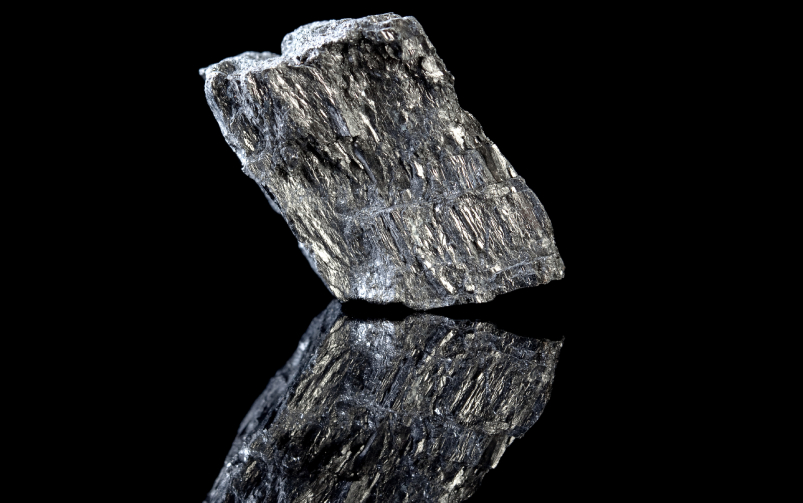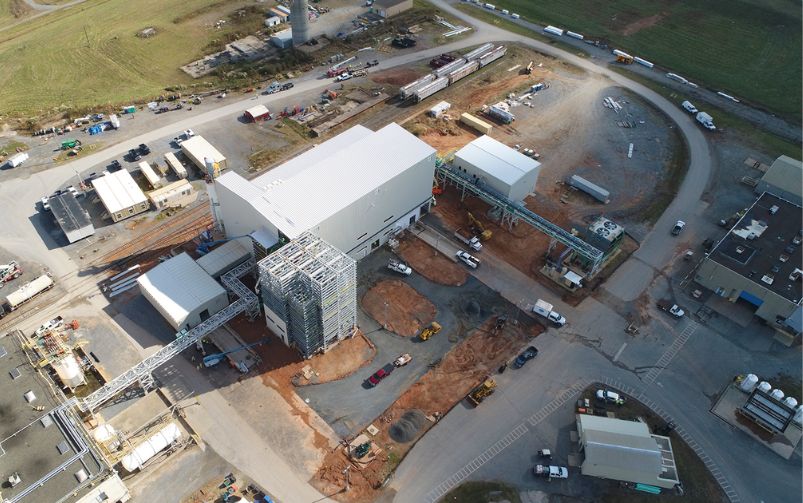The number 10 shaft at Rio Tinto's Resolution Copper project. The U.S. Forest Service is set to approve a land swap that would allow the company to develop the Arizona copper project. Courtesy of Rio Tinto.
Welcome back to your weekly mining news recap, where we catch you up on some of the news you may have missed. This week’s headlines include funding for Ontario junior miners, a controversial land swap between Rio Tinto and the U.S. government and updates to Chile’s mining royalty bill.
The Canada Climate Law Initiative (CCLI) released new guidelines clarifying the legal duties for publicly traded junior mining companies concerning climate change. Though junior miners tend to have insignificant carbon footprints, the CCLI advises the companies to report their plans to mitigate climate-related risks to investors. The CCLI’s guide offers resources to aid companies traded on the TSX Venture Exchange to prepare for proposed changes to Canadian securities laws and international accounting standards that will require public companies to more thoroughly report climate risks.
Quebec plans to spend $85 million to move 200 households away from Glencore’s Horne copper smelter in Rouyn-Noranda, as reported by CBC News. The plant – Canada’s only operating copper smelter – has long produced arsenic fumes far exceeding the provincial limit of three nanograms (ng) per cubic metre (m3). Until now, Horne had the right to emit a maximum of 100 ng/m3. The factory will be required to reach an arsenic emissions limit of 15 ng/m3 within five years, with a long-term goal of reaching three ng/m3.
The U.S. Forest Service is set to approve a land swap with Rio Tinto that would allow the company to develop the Resolution Copper project in Arizona, as reported by Reuters. Apache Stronghold, a Native American non-profit group, sued the U.S. federal government to prevent the transfer of a federally owned campground that sits above a copper deposit that could sustain mining operations for at least 40 years. Local Indigenous opponents of the project argue a site of religious importance would be ruined by the mine.
Canada, the U.S. and the European Union are among the governments that list lithium as a critical mineral, but by 2030 demand is expected to far outstrip supply. Canada has only 2.5 percent of the world’s known lithium deposits, but the federal government and lithium explorers in the country think there’s potential for Canada to become a major lithium supplier. In a story from CIM Magazine’s February issue, Alexandra Lopez-Pacheco reports that exploration companies and prospectors are ramping up efforts to find the mineral.
Speaking of lithium, E3 Lithium CEO Chris Doornbos spoke to CIM about the commercialization of the company’s technology, which can bring brine liquid to the surface and directly extract lithium from it. And in other E3 news, the company upgraded the resource of its Alberta’s Bashaw district this week, making it one of the world’s largest direct lithium extraction brine projects, as reported by The Northern Miner. The Bashaw district now holds 6.6 million measured tonnes of lithium carbonate equivalent (LCE) and 9.4 million indicated tonnes of LCE from 40 billion cubic metres of brine with a median lithium concentration of 74.5 mg/L. The lithium market is expected to continue growing as the adoption of electric vehicles, which rely on lithium-ion batteries, increases.
A broken pipeline from Rio Tinto’s Diavik mine in the Northwest Territories spilled 180 Olympic swimming pools’ worth of groundwater last month – but no damage was done as the water spilled into a designated containment area, according to CBC News. The spill contained groundwater mixed with small amounts of water used for dust suppression but did not contain tailings or sewage. The pipeline will not be fixed until extreme weather conditions end in the N.W.T.
Chile’s government is working to revise a mining royalty bill after receiving criticism from the industry, according to Reuters. The country’s finance minister said that after the changes, the royalty would have a fixed “ad valorem” component of one per cent on copper sales and a portion of between eight and 26 per cent depending on the company’s operating margin. The minister said he was also considering putting a ceiling on a company’s potential tax burden for this and other taxes, and other changes.
Also in Chile, the country’s top steel producer, CAP, is developing a pilot green-hydrogen plant to decarbonize steel production at its Talcahuano city unit, as reported by Mining.com. The project, which is backed by Chile’s Green Hydrogen Accelerator initiative, is expected to produce around 1,550 tonnes of green hydrogen by 2030.
The Ontario government allocated $6 million for junior miners in the 2023 budget to help meet the growing demand for critical minerals, a move that was received favourably by provincial companies and the Ontario Mining Association, according to the Financial Post. The province has invested a total of $35 million in its junior exploration program since 2021.
In other budget news, the Mining Association of Canada (MAC) is calling for the federal budget to include tax credits and other incentives to help miners to build the projects needed for the electric vehicle boom, as reported by the Financial Post. MAC head Pierre Gratton said Ottawa has taken miners for granted, as millions of dollars are required to finance projects that produce critical metals such as nickel, cobalt and lithium. He also criticized the government's Strategic Innovation Fund for failing to benefit any advanced mining project nearing the construction phase, and said its recent investments in early-stage projects were “peanuts” compared to the amount of funding needed.
That’s all for this week. If you’ve got feedback, you can always reach us at editor@cim.org. If you’ve got something to add, why not join the conversation on our Facebook, Twitter, LinkedIn, or Instagram pages?




